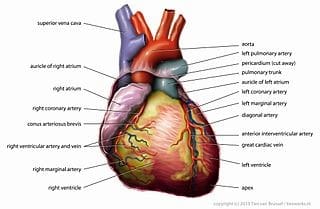While we’re not necessarily aware of our heartbeat, this inner rhythm actually contributes to how we experience the body, and what belongs to it, according to research recently conducted at EPFL. A study to be published in the journal Psychological Science later this year supports the idea that signals from our internal organs combine with visual information to contribute to self-consciousness.
“The relevance of internal organs for identifying the self was determined over a decade ago,” says EPFL researcher Olaf Blanke. “What is new about our approach and findings is that these internal signals are integrated with signals from the eyes.”
When we look in a mirror, we know to a certain extent that the reflection is not actually part of our body. That’s because the brain is constantly processing information at different levels of consciousness, helping us to differentiate between self and non-self.
But our mind can be tricked into identifying an external body as part of our own. This kind of illusion can be induced by providing conflicting sensory information, from vision and touch for example, showing that external information contributes to how we perceive ourselves. Can a visual representation of the heart, an internal organ, contribute to self-consciousness as well?
According to EPFL research the answer is yes. The scientists conducted experiments in which a person, attached to electrocardiogram sensors to monitor the heart rate, watched a real-time movie of their own body through virtual reality glasses so that it seemed as though their double were standing two meters in front of them. A bright silhouette, blinking on and off either in or out of sync with the heartbeat, was then projected onto this virtual double.
Seventeen people participated in the experiment. They reported feeling a stronger identification with their virtual double when the flashing silhouette was synchronized with their own heartbeat
“When human subjects viewed a visualization of their heartbeat on a virtual body, it felt more like their own body,” confirms researcher Jane Aspell, who led the study with Lukas Heydrich at EPFL in Blanke’s Laboratory of Cognitive Neuroscience at the Center for Neuroprosthetics. “It also caused them to feel that their self was located outside of their own body, nearer to where the virtual double was seen. This study is the first to show that visual signals carrying information about the internal state of the body, the heartbeat, can be used to change how people experience their own body and self.”
The heartbeat illusion demonstrated here supports the theory that internal organs shape body ownership. It also shows the surprising ways in which self-consciousness can be altered.
If our reporting has informed or inspired you, please consider making a donation. Every contribution, no matter the size, empowers us to continue delivering accurate, engaging, and trustworthy science and medical news. Independent journalism requires time, effort, and resources—your support ensures we can keep uncovering the stories that matter most to you.
Join us in making knowledge accessible and impactful. Thank you for standing with us!


good……………..